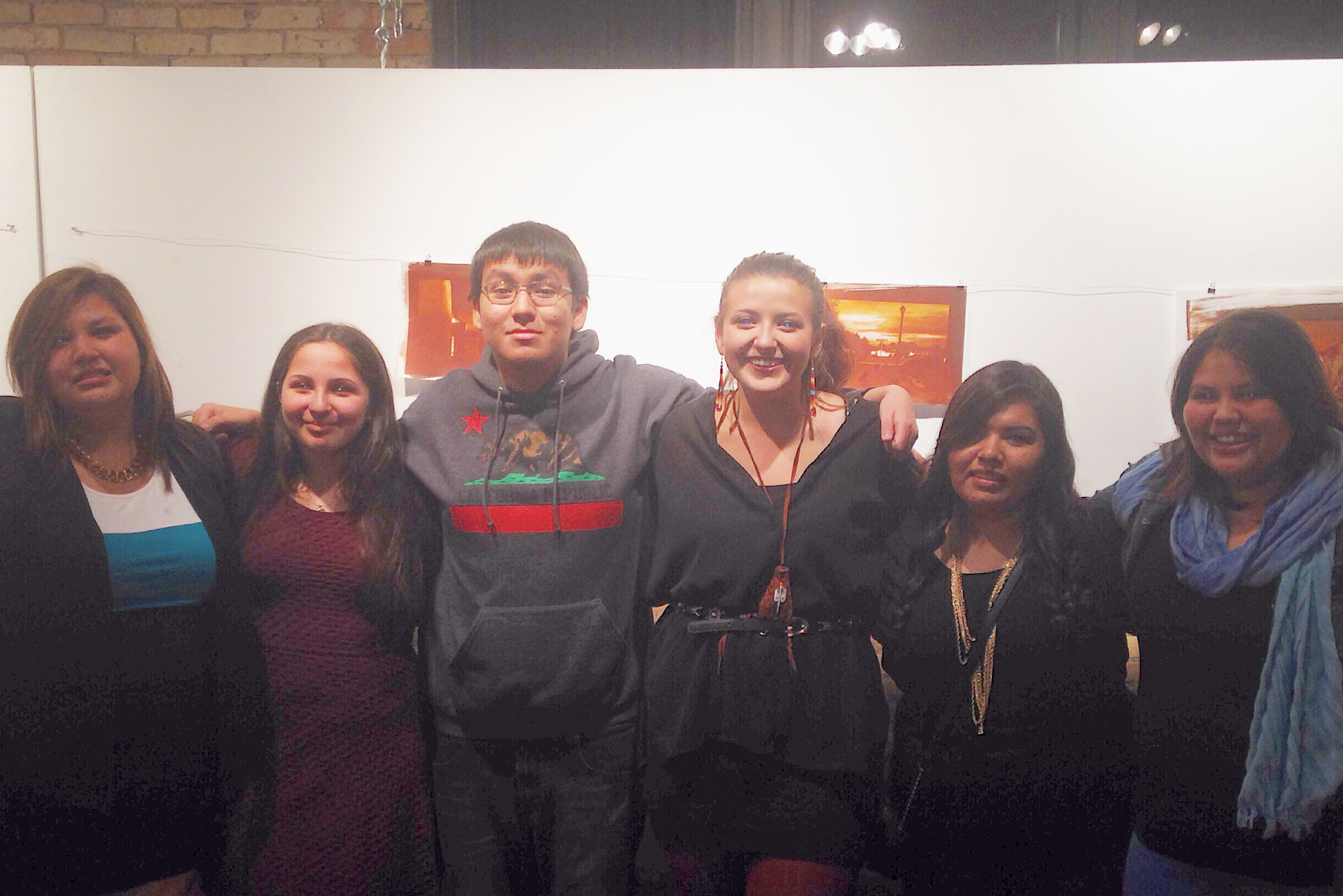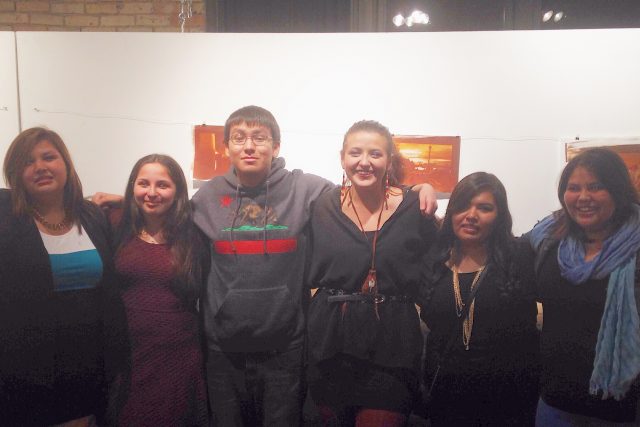 Before the cold winter season claimed
Before the cold winter season claimed
its place in the Twin Cities area this year, six Native American high
school students from across the area were able to enjoy a memorable
experience.
On an October afternoon, participants
in the Mazinaakizige: American Indian Teen Photography Project and
their mentors connected with the elements on a canoe journey down the
Mississippi River.
The students were
armed with 35 mm film cameras and anticipation for whatever this
journey may have brought. Second year participant, Breanna Green
shared about her experience, “Being on the water is healing and so
calming.”
Participants and
mentors alike carefully moved along one of the largest rivers in the
world across the glistening sparkle of the reflection of the sunlight
with wonderment and curiosity. This incredible opportunity was the
perfect environment for connection to the natural world, the basis
for creative thought which is fertile ground for photographic
practice.
On Nov. 22, six Native American high
school students celebrated the completion of their participation in
the Mazinaakizige: American Indian Teen Photography Project at the
Minneapolis Photography Center. Rainey Rock (White Earth Ojibwe),
Sage Mills (Lakota), Breanna Green (Red Lake Ojibwe), Andrew
Fairbanks (White Earth Ojibwe), Lupe Thornhill (Red Lake Ojibwe) and
Elizabeth Santana (Hunkpapa Lakota) invited their families to their
very own gallery opening featuring their work. Hoka Hey drum group, a
collective of young Native men, recognized the students and families
with an honor song. Dozens of supporters from the Native arts
community came to support the young artists as well to share food,
stories and prayer for this project.
The word “Mazinaakizige” is an
Ojibwe word meaning, “the act of creating pictures.”
Mazinaakizige: American Indian Teen Photography Project launched a
pilot program three years ago in collaboration with the Minneapolis
Photo Center and the Minnesota Historical Society with sponsorship
from the Arts and Cultural Heritage Fund.
Maren Levad, Museum Outreach
Specialist at the Minnesota Historical Society took on stewardship of
the program, since its inception. The focus was to provide Native
students with historical background of photography as well as to
build photographic skills. In order to implement a more cultural
approach to the program, Levad connected with Indigenous Visual
Artist and Filmmaker, Missy Whiteman to bring cultural dimension to
this work.
For those that have had the
opportunity to work with Whiteman, they know her work comes from a
deep grounding in her identity as an Indigenous person. She is from
the Arapaho and Kickapoo Nations and she finds a natural spiritual
healing through her art and she shares that insight with the students
participating in the program.
Elizabeth Santana, a junior at South
High All Nations, was accepted into Mazinaakizige this year describes
her experience with the cultural aspect, “There are really good
vibes with everyone here. We are all very productive together, it’s
like we’re family.”
This years’ program offers Native
youth a unique opportunity to learn more about film photography, a
dying art form. With digital photography ingrained so much in
everyday film making, film photography is becoming a specialized
discipline. Throughout the three years of the program, American
Indian students spent 10 weeks together, learning, creating, sharing
and connecting to the film photographic process through an Indigenous
lens.
This year, participants delved into
early photographic methods and ultimately producing Van Dyke style
photos themselves. Named for its brownish overtone after painter
Anthony Van Dyke, this process originates from argentotypes invented
in 1842. One of the unique signatures of this style is the use of a
variety of different kinds of paper, typically watercolor-compatible
textures. Digital negatives were implemented into this year’s
process, bridging the present with the past offering participants a
rich photographic education.
Program mentors and photography
specialists Nathan Lewis and Stefanie Motta brought a wealth of
knowledge of the Van Dyke technique to the program. Coral Moore,
mentor from the Minnesota Historical Society shared how photography
can help Native students focus their energy in a healthy way,
“Photography is a powerful tool for self-expression for Native
youth.”
“This is a tough medium to work
with. This process teaches our students humility and patience. They
become attached to the images they want to produce, so when it
doesn’t work out, it’s a humbling feeling.” Whiteman said about
the student’s experience with the film process.
Disappointment is not always
comfortable, but can help a young person grow and mature. Rainey
Rock, a senior at Harding High School, spoke about what she took away
from the program, “I learned how to take constructive criticism
without taking it personally.” All of which, can be important
lessons for the development of high school students in order to
prepare them for the future.
When asked about what went well with
the program, one of the common themes that came from students and
mentors is the overall welcoming feeling and gratuity for creative
environment. Moore credits Orin and Abby Rutchick, founders of
Membership for the Minneapolis Photography Center for providing a
creative space for the program, “It is such a beautiful space and
I’m thankful to them for always showing such kind hospitality to
our program.”
Participant Breanna Green felt
strongly like she belonged there, “The food and love they showed us
helped me to be successful in this program.” An act that can go a
long way to proving that Indigenous values of giving can be a best
practice to support Native youth.
Santana reflects on her personal
development thanks to the program, “I learned that by keeping your
mind open to new things, that you can find that you’re really great
at something.”
PHOTO: Mazinakizie participants (left to right): Rainey Rock, Lupe Thornhill, Andrew Fairbanks, Sage Mills, Elizabeth Santana and Breanna Green. (Photo by Deanna Standing Cloud)







